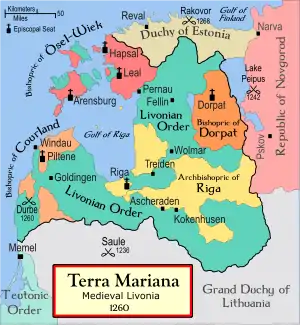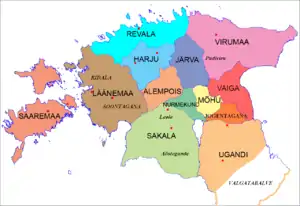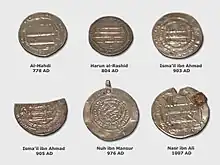Nurmekund
Nurmekund (Low German: Nurmegunde) was a small independent country (ancient Estonian county) on the north coast of Lake Võrtsjärv in Central Estonia, bordered by Sakala, Alempois, Järvamaa, Mõhu, and Ugandi. Nurmekund had an area of approximately 600 hides.

Monastic state of the Teutonic Knights, 1225 - 1250.

Livonia in 1260.

Põltsamaa river, the border river of Nurmekund, in 2005.
Nurmekund Nurmekund | |||||||
|---|---|---|---|---|---|---|---|
| Migration period–1224 | |||||||
 Ancient Estonia, Nurmekund is dark green. | |||||||
| Capital | Pilistvere 58°39′46″N 25°44′56″E | ||||||
| Common languages | Old Estonian | ||||||
| Religion | Estonian paganism, Thor cult | ||||||
| Elder | |||||||
| History | |||||||
• Established | Migration period | ||||||
• Disestablished | 1224 | ||||||
| |||||||
See also
References
External links
This article is issued from Wikipedia. The text is licensed under Creative Commons - Attribution - Sharealike. Additional terms may apply for the media files.
